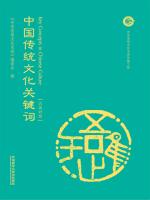Reading Report
辰
This semester, I delved into Key Terms of Chinese Traditional Culture as
part of the Foreign Language Teaching and Research Reading program. This
book has been an eye - opening journey, offering profound insights into
the essence of Chinese traditional culture. I. Understanding the
Philosophical Foundation One of the most significant gains is a deeper
comprehension of Chinese philosophical thoughts. Terms like “Confucian
Ren (Benevolence)” and “Taoist Wu - Wei (Non - action)” are not just
words but profound concepts that shape the Chinese way of thinking.
“Ren” emphasizes the importance of kindness, empathy, and social
harmony. It made me realize how Confucianism has influenced Chinese
society's emphasis on moral values and interpersonal relationships for
thousands of years. On the other hand, “Wu - Wei” from Taoism doesn't
mean inaction but rather acting in harmony with the natural flow of
things. This concept has broadened my perspective on how to approach
life's challenges, teaching me the value of going with the flow rather
than forcing outcomes. II. Appreciating Cultural Symbols The book
also introduced me to a plethora of cultural symbols. For example,
“Fengshui” is often misunderstood as mere superstition in the West.
However, through this book, I learned that it is a complex system that
combines ecological wisdom, architectural aesthetics, and philosophical
beliefs. It reflects the Chinese people's long - standing pursuit of
harmony between humans and nature. Another term, “Chinese Calligraphy,”
is not just a form of writing but an art form that embodies the Chinese
aesthetic sense and spiritual pursuit. Each stroke in calligraphy
carries the calligrapher's emotions and cultural connotations, which is
a unique manifestation of Chinese traditional culture. III. Enhancing
Cross - cultural Communication In a globalized world, understanding
these key terms of Chinese traditional culture is crucial for cross -
cultural communication. When introducing Chinese culture to the world,
these terms serve as the building blocks. For instance, when explaining
“Yin and Yang,” it's not just about the simple dichotomy of opposite
forces but a profound concept that permeates every aspect of Chinese
culture, from traditional Chinese medicine to martial arts. By mastering
these terms, I can better convey the depth and uniqueness of Chinese
culture to people from different cultural backgrounds, promoting mutual
understanding and respect. IV. Personal Reflection and Growth
Personally, reading this book has been a journey of self - discovery. It
has made me more proud of my cultural heritage and more motivated to
explore further. It has also changed my way of thinking in some aspects.
The emphasis on harmony, virtue, and the pursuit of inner peace in
Chinese traditional culture has influenced my attitude towards life. I
find myself more inclined to seek balance and harmony in my daily
interactions and decision - making processes. In conclusion, Key Terms
of Chinese Traditional Culture is more than just a book about Chinese
cultural terms. It is a gateway to understanding the soul of Chinese
traditional culture. It has enriched my knowledge, broadened my cultural
horizon, and will continue to guide me in my future exploration of
Chinese culture and cross - cultural communication.



 京公网安备 11010802032529号
京公网安备 11010802032529号